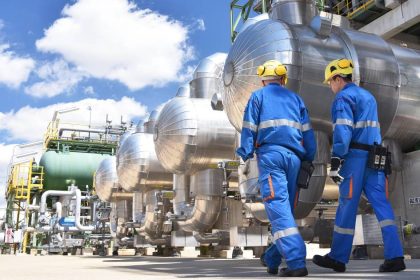Plastics heading to landfill can now be repurposed into essential building materials thanks to new Australia-first recycling technology.
A state-of-the-art recycling plant by CRDC Australia, which opened last week, will convert hard-to-recycle plastics into valuable building products for use in the construction industry.
The groundbreaking technology is the first of its kind in Australia. It will be used to make a versatile, high-performance, low-carbon hybrid mineral polymer – engineered for both structural and non-structural building applications.
Known as RESIN8, the concrete additive provides a sustainable alternative to conventional building materials that will help reduce project’s embodied carbon and provide more environmentally friendly material options to both builders and clients.

Concrete and carbon
Currently, the building sector is responsible for 20 per cent of all yearly emissions, most of which result from concrete, steel and aluminium.
Concrete production is responsible for most of those carbon emissions, with the world’s most common material an essential component in constructing buildings, roads, bridges, and tunnels.
Concrete’s principal component, cement, is produced through an energy-intensive process that emits large quantities of carbon.
Research is underway to reduce the amount of CO2 produced as part of cement’s production process, with other supplementary cementitious materials being trialled to reduce emissions.
Some manufacturers are already using cementous material additives and substitutes to reduce the yearly production of up to 500 million tonnes of CO2.
Innovation to drive further change
Unlike traditional plastic recycling methods, the RESIN8 manufacturing process is compatible with all types of plastics and allows for a carbon-negative production process.
CRDC Australia Managing Director Shane Ramsey, says the facility is a game-changer in construction sustainability.
“Following the US, Costa Rica, and South Africa, we are proud to be the fourth global location hosting this groundbreaking technology…we now have a local solution to transform plastic waste into innovative, eco-friendly building solutions,” he said.
“By converting difficult-to-recycle plastic waste into a valuable resource for the construction industry, we are not only addressing today’s environmental challenges but also paving the way for future innovations.”

The recycling facility will initially convert up to 1 metric of plastics per hour, with plans to increase that capacity later this year when demand necessitates, thanks to its modular production lines.
According to sustainable construction expert Dr Ali Kashani from UNSW Civil and Environmental Engineering, the nation’s building industry has all the tools needed to drive substantial environmental change; It’s just a matter of companies investing in the innovation and technology required.
“The construction industry is one of the most significant contributors to Australia’s total emissions, but at the same time, it has great potential for decarbonisation through innovation and collaboration among different stakeholders,” Dr Kashani said.
“However, embodied carbon is sometimes overlooked in design and construction. We often focus on renewable energy, such as solar panels, for emissions reduction from the operations side, such as heating or cooling buildings… that’s fantastic but not enough.”“We should also consider the energy spent and CO2 emitted during manufacturing and transporting the materials, too.”






